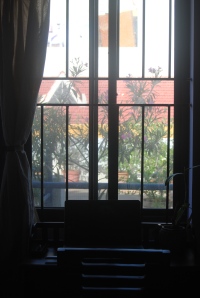A lot has been said and written about interview etiquette or your first day at work, but not enough has been said about how an office farewell can be used as a powerful tool to build people and teams. Especially since office farewells are as common these days as inductions.
The first thing to evaluate is whether you want to give an employee a team farewell. And if you do, you do have a responsibility to create a memorable experience for the person leaving your organization and your team. In order to do that, it’s important to understand what a team farewell is in the first place.
A farewell is an opportunity to celebrate an employee’s performance and the good work that you did together. It’s not a performance appraisal and neither is it the place to give employee’s feedback on their working style in a public forum. The need for this feedback to be given at all—on the eve of an employee’s departure—needs to be evaluated. If so, it is best done through a one-on-one meeting and not a farewell.
5 things you never do at an office farewell:
- Start by revealing for the first time that you never liked the person initially. It’s a bad opening line and could come as a bit of shock to a person who had “no idea.” In addition, corporate behavior is all about focusing on behavior that is appropriate. Using the term “like” makes it personal.
- Tell a person that they are difficult to get along with, and leave it at that. That’s just bad professional etiquette. If you didn’t talk about it when you worked together, a farewell is a bad time to bring it up. It’s wiser to “forever hold your peace.” In these cases, especially if you didn’t work together closely, it’s a better idea to use the following line, “We didn’t work together closely, but I wish you well.”
- Use the opportunity to show an employee how you have been imitating them behind their back. Imitating your colleagues behind their backs, just for laughs, is poor professional etiquette and shows a lack of maturity. Period. So if you have been doing it any way, it’s a bad idea to make your revelation now. Also, you have no idea whether the person concerned would actually find it funny.
- Tell a person that you hope that they are “happier” in their next company. It’s an admission to the team that the employee wasn’t too happy with you, which may or may not be the case. More importantly, if a farewell is about celebrating the good work you did together, you end up shifting the focus.
- Make startling negative revelations about a person. There are so many platforms for that. Why choose a farewell? You end up publically humiliating an employee, and then it’s no longer a farewell.
5 things you could do at an office farewell
- Celebrate the good times: All teams and people have them. What were yours? Encourage your employees to remember them.
- Remember that the first and last speakers set the tone: So choose them wisely. Make sure that these two speakers actually have something uplifting to say.
- Stay positive: If the environment in the room is turning negative, you need to moderate. Interject with a positive comment that lightens the mood.
- Include a team lunch: Choose a place where the food is good, but more importantly where you can talk and just enjoy being a team. And finally, in the age of “selfies”, don’t forget a fun team photo 🙂
- Choose your farewell gift carefully: At Wipro, my team gave me a quill in a book and a miniature cycle because I was taking a break from work to write. I still have it in my book case, and each time I look at it, I think of my wonderful team. And that’s what a good farewell should also do—leave you and your team with something to smile about.
Gautama Buddha once said, “If you propose to speak, always ask yourself, is it true, is it necessary, is it kind?” That applies to a lot of situations, but it is especially true of an office farewell.
What’s been your best or worst experience at an office farewell? I’d love to hear more about it.






